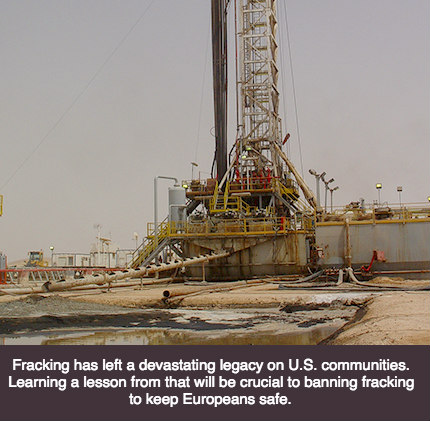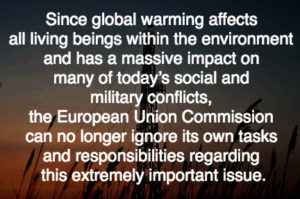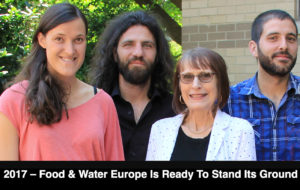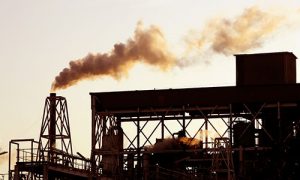By Andy Gheorghiu and Frida Kieninger
 In November 2016, the EU-Commission organized a “workshop on public health impacts and risks resulting from oil and gas extraction.” Behind this title are mainly questions around fracking and a hesitant attempt by the Environment Directorate General (DG ENV) – historically the most supporting part of the Commission concerning environmental issues – to find out more about its impacts on public health.
In November 2016, the EU-Commission organized a “workshop on public health impacts and risks resulting from oil and gas extraction.” Behind this title are mainly questions around fracking and a hesitant attempt by the Environment Directorate General (DG ENV) – historically the most supporting part of the Commission concerning environmental issues – to find out more about its impacts on public health.
Scientists from the U.S. and Europe, as well as industry representatives and NGOs, had their say at the workshop. While the public health impacts of oil and gas extraction though fracking in the U.S. have been analyzed in several studies, most were sponsored by the oil and gas industry and are seriously biased towards its interests. Nonetheless, there is an enormous amount of evidence that fracking negatively affects public health, as confirmed and acknowledged by this compendium of scientific, medical and media findings.
However, authorities still think that there is a lack of data. This is mainly due to the public’s dependency on industry to obtain information about fracking chemicals, injection mixtures, amounts, and due to the absence of much needed baseline studies, measuring indicators before hydrocarbon production.
 DG Environment from the EU-Commission seems to have its hands bound and is largely unable to protect Europeans from health hazards caused by fracking. There are a few initiatives such as the Human Biomonitoring Initiative (HBM4EU) or the EU platform for chemical monitoring data (IPChem), but these are far from leading to binding legislation aimed specifically at unconventional gas production.
DG Environment from the EU-Commission seems to have its hands bound and is largely unable to protect Europeans from health hazards caused by fracking. There are a few initiatives such as the Human Biomonitoring Initiative (HBM4EU) or the EU platform for chemical monitoring data (IPChem), but these are far from leading to binding legislation aimed specifically at unconventional gas production.




 Many people said 2016 was a bad year. And there were many reasons: the result of the US elections, Brexit, or the high toll of environmental activists that were killed for standing for their communities around the globe. We don’t know what 2017 will look like, but we are sure that we want to be ready for some of the challenges we will find for our food, our water, our climate and our democracy. Together, we need to make 2017 a better year. And united we will have the power to do so!
Many people said 2016 was a bad year. And there were many reasons: the result of the US elections, Brexit, or the high toll of environmental activists that were killed for standing for their communities around the globe. We don’t know what 2017 will look like, but we are sure that we want to be ready for some of the challenges we will find for our food, our water, our climate and our democracy. Together, we need to make 2017 a better year. And united we will have the power to do so!
 In part one of this blog, I referred to the obvious inefficiency of the European Emissions Trading System (ETS). While the ETS is praised to be the key element of the European climate policy, it fails to deliver and is less efficient than other factors such as energy prices and the overall tendency towards more sustainability.
In part one of this blog, I referred to the obvious inefficiency of the European Emissions Trading System (ETS). While the ETS is praised to be the key element of the European climate policy, it fails to deliver and is less efficient than other factors such as energy prices and the overall tendency towards more sustainability.